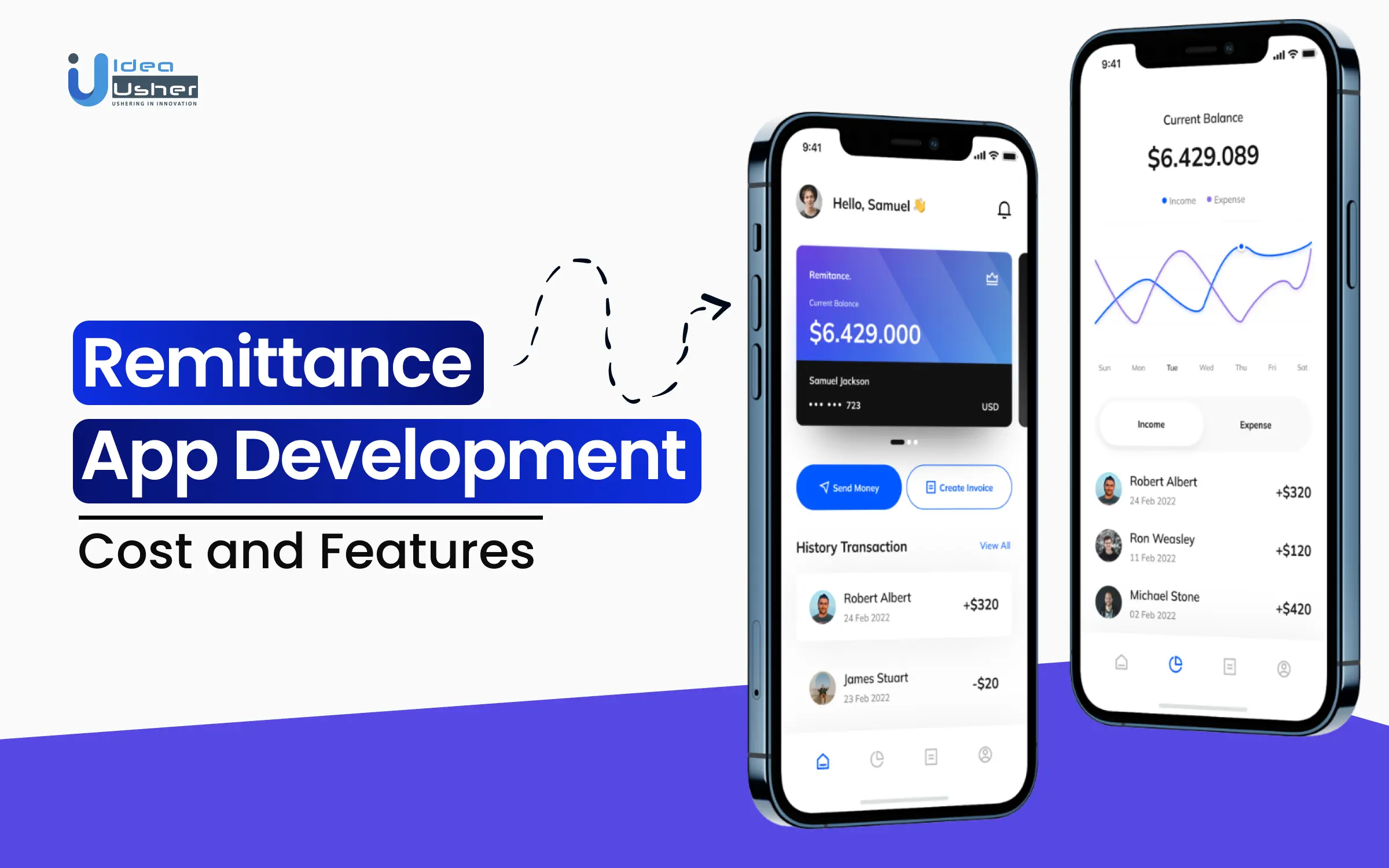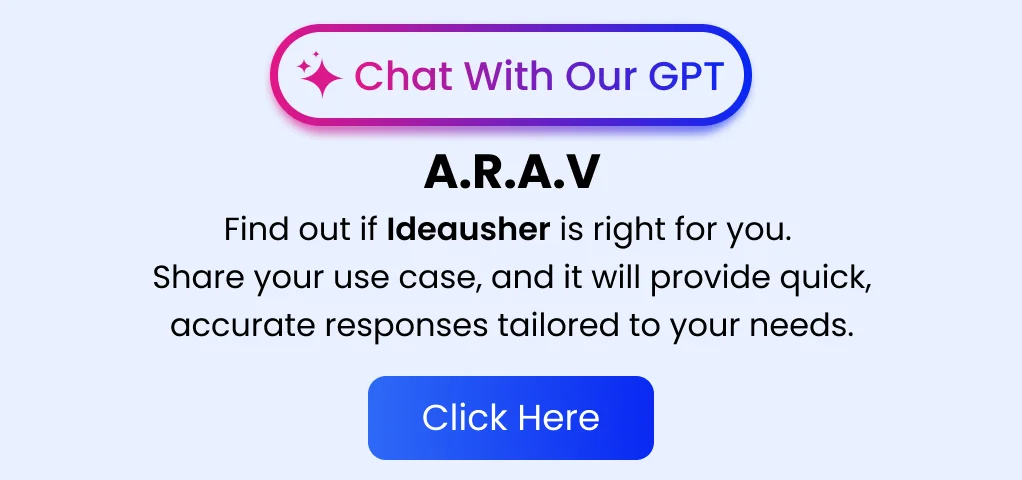the demand for fast, secure, and affordable international money transfers is stronger than ever. Remittance apps have made it easier for people, especially migrant workers, to send money back home. This shows just how important these services are and how much potential there is for innovative app solutions in this space.
One such popular example is Emitly, a leading remittance platform with an estimated revenue of $500 million in 2022. Emitly facilitates transfers to over 150 countries, offering a variety of payment options, including bank transfers and cash pickups, with a transaction limit of up to $18,000 over six months.
Building a remittance app isn’t just about sending money – it involves secure payments, real-time currency exchange, and following financial regulations. As demand grows, many businesses are looking to create their apps for seamless, global transfers. In this blog, we’ll cover the key features and costs of building a successful remittance app, giving you a simple roadmap to enter the money transfer market.
Key Market Takeaways for Remittance Apps
Source: VerifiedMarketResearch
This surge is largely driven by the increasing demand for digital financial solutions, especially among millennials and immigrants who need faster, more efficient ways to send money across borders.
Remittance apps offer a level of convenience and speed that makes them a popular choice, especially in regions where traditional banking services are limited.
Two standout players in this market are Ria Money Transfer and Xoom. Ria, with its vast network of over 190 countries, offers flexible delivery options, including bank deposits, cash pickups, and mobile wallet transfers. This makes it a go-to for users looking for affordable, transparent remittance services with competitive exchange rates.
Furthermore, Xoom, a service from PayPal, is known for its quick transactions to over 130 countries. Its integration with PayPal makes sending money easy using methods like PayPal balances or credit cards. However, users should note that Xoom’s fees can sometimes be higher for certain types of transfers.
Work with Ex-MAANG developers to build next-gen apps schedule your consultation now
Why is This a Great Time to Invest in a Remittance App Development?
Thanks to the growing demand for digital money transfers. Every year, billions of dollars are sent across borders, especially from migrants to their families in regions like Southeast Asia, Africa, and Latin America.
Apps like Remitly, which expects to bring in around $500 million in revenue in 2023, show just how big the market is. With features like bank transfers, cash pickups, and mobile wallets, these platforms offer a much quicker and cheaper alternative to traditional money transfer services, making them a popular choice for users worldwide.
The market is booming, and technology is making it even easier. Mobile phones are becoming more common globally, and with it, people are turning to apps for everything, including sending money.
WorldRemit, another leading player, is set to generate about $200 million in revenue in 2023, proving the potential of remittance platforms.
With many governments embracing digital financial regulations, the environment for fintech innovation is ideal, meaning the demand for convenient, low-cost remittance apps will only grow. These apps don’t just help people send money—they also create profitable business opportunities. Revenue comes from transaction fees, premium services, and cross-border partnerships, making these platforms scalable and sustainable.
As remittance volumes continue to rise, investing in a remittance app now is a smart move with huge growth potential.
Must-Have Key Features of a Remittance App
Here are some of the key features of a remittance app,
1. User Registration & Authentication
A secure onboarding process where users create accounts by verifying their identity. This ensures that only authorized individuals can access the app, preventing fraud. MFA and biometric verification (like fingerprint or facial recognition) are commonly used to enhance security.
2. Account Linking
The app allows users to link their bank accounts, credit cards, or digital wallets (like PayPal or Venmo) for seamless transfer of funds. This flexibility ensures that users can choose their preferred payment method for sending and receiving money.
3. Instant Fund Transfer
The app facilitates quick, often real-time, money transfers between users. This feature is essential for users who need to send or receive money urgently, especially for international transactions where timing is critical.
4. Multi-Currency Support
The app supports transactions in various currencies, making it ideal for international money transfers. It automatically converts funds between currencies at competitive exchange rates, providing users with flexibility and convenience when transferring money across borders.
5. Real-Time Transaction Tracking
Users can track the status of their remittance in real time. From initiation to completion, the app provides up-to-date notifications and updates, so users can know exactly when the money is sent, received, or processed, offering transparency and peace of mind.
Features That Can Enhance a Remittance App
Here are some innovative features that can enhance a remittance app,
1. AI-Powered Fraud Detection
AI algorithms analyze transaction patterns to detect potential fraudulent activities in real time. This proactive approach enhances security, preventing fraud before it happens and boosting user trust in the platform.
2. Blockchain Integration
By incorporating blockchain, remittance apps can offer secure, transparent, and faster cross-border transactions. Blockchain eliminates intermediaries, reducing transaction costs and improving processing speeds, which increases trust and efficiency.
3. Gamified Rewards Programs
A gamified system rewards users with points, badges, and prizes for engaging with the app. This increases user loyalty, motivates repeat usage, and encourages social sharing, helping the app grow through viral marketing.
4. Financial Inclusion Tools
These tools, like micro-savings accounts and credit-building features, provide underserved populations with access to basic financial services. It promotes financial literacy and empowers users, expanding the app’s reach and impact.
5. Voice-Enabled Transfers
Users can initiate transfers using voice commands, making the app more accessible for individuals with disabilities or those unfamiliar with technology. This enhances user experience and inclusivity, reaching a wider demographic.
6. Social Impact Integration
By partnering with charities, users can donate a portion of their remittances to social causes. This enhances the app’s brand image, encourages goodwill, and appeals to socially conscious users, fostering a positive impact.
7. Personalized Financial Insights
AI analyzes user transaction history to offer tailored financial insights, such as budgeting tips and investment advice. These personalized recommendations help users make smarter financial decisions and increase their engagement with the app.
Development Steps for a Remittance App
Here are some of the development steps for the remittance app,
1. Market Research and Requirement Analysis
Businesses must start by analyzing market trends, user needs, and the competitive landscape. This helps identify key features and understand compliance with international regulations, such as AML laws.
2. Designing User-Centric Interfaces
The UI should be intuitive and visually appealing. The user experience should ensure easy navigation, quick access to features, and smooth onboarding for users with diverse technical skills.
3. Choosing the Right Technology Stack
Selecting the appropriate technology stack is crucial for the app’s performance and scalability. Backend technologies like Node.js or Python, mobile frameworks like Flutter or Swift, and secure payment gateways should be carefully chosen.
4. Implementing Security Features
Security is paramount in remittance apps. Features like end-to-end encryption, two-factor authentication, fraud detection systems, and compliance with PCI DSS standards ensure safe transactions.
5. Developing Multi-Currency Support
The app must support multiple currencies and provide real-time exchange rate updates. Integrating APIs for currency conversion ensures accurate and transparent transfers.
6. Enabling Seamless Payment Integration
The app should support various payment methods, including bank transfers, credit/debit cards, and digital wallets. Reliable payment gateways like Stripe or PayPal are essential for smooth processing.
7. Building Regulatory Compliance and KYC Features
Integrating KYC processes is mandatory for compliance. Automating identity verification using third-party services can streamline this step while ensuring regulatory adherence.
8. Testing and Quality Assurance
The app should undergo rigorous testing to identify and fix bugs. Performance testing, security testing, and user acceptance testing ensure the app is robust, secure, and user-friendly.
9. Deployment and Ongoing Maintenance
After launching the app on platforms like iOS and Android, continuous monitoring is essential. Regular updates, feature enhancements, and user feedback integration help maintain competitiveness and user satisfaction.
Cost of Developing a Remittance App
| Development Stage | Details | Cost Range |
| 1. Research and Market Analysis | – Competitive analysis, target audience profiling, and regulatory compliance research. | $1,000 – $5,000 |
| – Feasibility study and business plan development. | ||
| 2. Design and UI/UX | – Wireframing and prototyping. | $2,000 – $8,000 |
| – UI and UX design for intuitive and visually appealing interfaces. | ||
| 3. App Features and Functionality | – Core features like user registration, transfer initiation, and transaction tracking. | $3,000 – $15,000 |
| – Payment methods integration and basic security features. | ||
| 4. Front-End Development | – Developing cross-platform interfaces (iOS and Android) with responsive design. | $2,000 – $10,000 |
| 5. Back-End Development | – Server-side logic, database integration, and secure payment processing. | $3,000 – $15,000 |
| – Lightweight API integrations for external financial systems. | ||
| 6. Testing and Quality Assurance | – Unit testing, integration testing, and basic bug fixing. | $1,000 – $5,000 |
| 7. Ongoing Maintenance and Updates | – Regular updates and minor feature improvements post-launch. | $1,000 – $5,000/year |
| Total Cost Range | $10,000 – $100,000 |
Variable Factors Affecting the Remittance App Development Cost
Several variable factors can significantly influence the overall development cost of a remittance app. These factors can be broadly categorized into:
- Regulatory Compliance: Meeting regulatory requirements in different countries can be complex and costly. This includes obtaining necessary licenses, complying with KYC/AML regulations, and ensuring data privacy and security.
- Integration with Payment Gateways: Integrating with multiple payment gateways and processors can add complexity and cost, especially if the app supports a wide range of payment methods and currencies.
- Currency Exchange Rates: Implementing real-time currency conversion and ensuring competitive exchange rates require integration with reliable data providers and may involve additional costs.
- Fraud Prevention: Implementing robust fraud detection and prevention mechanisms, such as AI-powered anomaly detection and multi-factor authentication, is crucial for security and can add to development costs.
Most Successful Business Models for Remittance Apps
The remittance industry has been transformed by digital platforms, giving rise to a variety of business models. These models cater to different customer needs and market dynamics. Here are some of the most successful business models used by remittance apps,
1. Transaction Fee and Foreign Exchange Margin Model
This model focuses on earning revenue through transaction fees and foreign exchange (FX) margins. Apps charge users a fee for each transfer and profit from the difference in currency conversion rates.
For Example,
Remitly is a leader in this space, offering two services:
- Express for instant transfers with a higher fee
- Economy for slower transfers at a more affordable rate
Remitly’s transaction fees depend on factors like the transfer amount, destination, and delivery method. Exchange rate margins average 1.5% to 2.5%. In 2022, Remitly processed over $8 billion in transactions, showing how effective this model is in generating significant revenue while remaining competitive.
2. Multi-Corridor Services Model
This model focuses on enabling users to send money across many countries. By establishing partnerships with local financial institutions it allows seamless transfers to various destinations.
For instance, WorldRemit operates under this model and offers services in over 130 countries. By partnering with local banks and mobile wallets, WorldRemit allows users to send money directly to bank accounts or mobile wallets, making it a popular choice for immigrants sending money home.
WorldRemit processes more than $8 billion in transactions annually, underscoring the demand for multi-corridor services in the remittance market.
3. Open Banking and API-Driven Model
This model leverages open banking principles and APIs to enhance efficiency, reduce costs, and provide better service for users.
For example, Paymentus is a key player in this model, offering advanced payment solutions that integrate seamlessly with a range of financial institutions. By using APIs, Paymentus ensures secure transactions and provides businesses with powerful reporting and analytics tools.
Top 5 Remittance Apps in the USA
Here are the top 5 remittance apps in the USA,
1. Western Union
Western Union is one of the most well-known names in the money transfer industry, with an extensive global network spanning over 200 countries and territories. The app provides multiple transfer options, including sending money to bank accounts, cash pickup locations, and mobile wallets. The cost of transfers varies based on the method chosen and the destination, but users can view the fees upfront during the transfer process. Western Union holds a strong reputation, reflected in its 4.7/5 user rating on the Apple App Store, showcasing its reliability.
2. Wise
Wise, formerly known as TransferWise, is celebrated for its transparency and fair exchange rates. It allows users to send money to over 70 countries and even hold multiple currencies within their accounts. One of its standout features is the real mid-market exchange rate, meaning users do not face hidden fees. Instead, a small percentage fee based on the amount sent is charged. More than half of all transfers are completed instantly, and the app enjoys an impressive 4.8/5 rating on the Apple App Store, reflecting its excellent service and user trust.
3. Taptap Send
Taptap Send has carved a niche by focusing on providing fast and affordable remittance services, particularly to regions like Africa and Asia. The app boasts an easy-to-understand fee structure with no hidden costs, ensuring users know exactly what they’re paying for. Transfers are typically completed within minutes, making it an ideal choice for people needing quick transactions. With a 4.7/5 rating on the Apple App Store, Taptap Send is known for its efficient service and user-friendly design.
4. Remitly
Remitly is another app dedicated to international money transfers, offering multiple delivery options such as bank deposits or cash pickups in over 170 countries. Fees depend on the speed of the transfer and the destination, with new users often receiving promotional discounts. Remitly is highly regarded for its reliability, with transfers available instantly or taking a few days depending on the chosen service. The app holds a remarkable 4.9/5 rating on the Apple App Store, showcasing its reputation for high-quality service.
5. Cash App
Cash App has evolved into a versatile platform for sending money, investing, and even trading Bitcoin. It provides both standard and instant transfers, with the latter incurring a small fee of 1.5%. Users can also buy stocks and cryptocurrency, making it a more comprehensive financial tool. Transfers are usually instantaneous or can take up to three business days. With a 4.8/5 rating on the Apple App Store, Cash App is highly rated for its functionality and ease of use.
Conclusion
Remittance apps offer significant benefits to both individuals and businesses. For individuals, these apps provide a convenient, cost-effective, and secure way to send money internationally, making it easier to support loved ones and complete cross-border transactions.
As for businesses, they can take advantage of this growing market by developing their remittance apps. They can generate revenue through transaction fees, currency exchange margins, and premium features. By offering competitive exchange rates, fast transfer speeds, and excellent customer service, businesses can build a loyal user base and establish a strong presence in the global remittance market.
Looking to Develop a Remittance App?
At Idea Usher, we have over 500,000 hours of fintech coding experience and can help you build a cutting-edge remittance app. Our specialty is creating secure, easy-to-use platforms with competitive exchange rates, fast transfers, and innovative features. From the initial idea to the final launch, our expert team will be with you every step of the way, making sure your app meets the highest quality and compliance standards. Partner with Idea Usher to bring seamless international money transfers to life!
Work with Ex-MAANG developers to build next-gen apps schedule your consultation now
FAQs
1. How to develop a remittance app?
To develop a remittance app, you need to start by selecting the appropriate tech stack for both front-end (mobile development) and back-end services. The app should integrate secure payment gateways, offer a user-friendly interface, and ensure strong encryption for data protection. Compliance with financial regulations, such as KYC and AML, is crucial. After defining the core features, you’ll proceed with designing, developing, testing, and deploying the app across multiple platforms, ensuring scalability for future growth.
2. What are the features of a remittance app?
A remittance app typically includes features like secure user registration with identity verification, the ability to send and receive money across borders, multi-currency support, and real-time exchange rate tracking. Users can view transaction history, receive notifications, and manage their accounts. Advanced features could include cash pick-up locations, integration with digital wallets, faster transfer options, and customer support features. Some apps may also offer loyalty programs, discounts, or lower fees for regular users.
3. How does a remittance app make money?
A remittance app generates revenue by charging fees on money transfers, either as a fixed amount or as a percentage of the transaction value. It can also earn from currency conversion, as the app might charge a margin on exchange rates. Additionally, premium features, such as expedited transfers or higher transfer limits, can bring in more income. Some apps collaborate with banks or financial institutions, allowing for additional revenue through partnerships or affiliate programs.
4. What is the cost of developing a remittance app?
The cost of developing a remittance app depends on various factors, including the complexity of the features, the technology used, and the development team’s location. The overall cost is influenced by the need for secure payment integration, regulatory compliance, and user experience design. More advanced apps with additional functionalities or integrations with banks and financial networks tend to be more expensive to develop. Ongoing maintenance, updates, and customer support also add to the long-term cost.




















